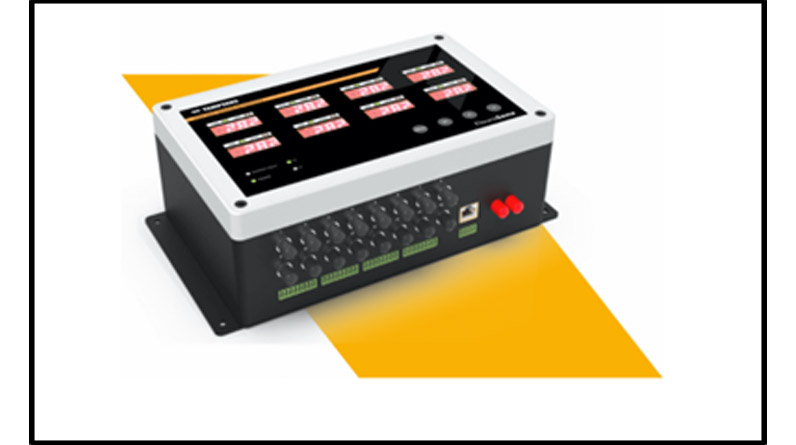Have you ever wondered what will happen if a sudden rain starts during an IPL or a T-20 cricket match? There are several recorded cases where rain has interrupted the game, and there emerged an additional step to involve this DLS method in cricket to derive a conclusion. But do you know what this DLS method in cricket is? If yes, fine. But if not, then here I’m to make you clear through this blog, where I have shared everything about the DLS method in cricket. Read the blog till the end to know more.
What Is the Duckworth-Lewis Method?
DLS method, which stands for Duckworth Lewis-Stern Method, is a mathematically derived formula introduced to calculate or derive near a conclusion for the matches interrupted due to rain. It helps adjust the target scores between the teams in the rain-affected matches.
To calculate the DLS method in cricket, the following details are necessary, like the number of overs played and wickets lost, to make a revised target for the team that is batting second in the rain-interrupted match. The Duckworth-Lewis Method derives nearly a fair conclusion for the matches that were interrupted due to the rain.
Why Is the Duckworth-Lewis Method Needed?
Like how the net run rate in cricket is used to confirm the winning team with similar points, the DLS method is also a metric to determine the winner in the game for the match interrupted due to the rain.
The Duckworth Lewis-stern method is necessary to derive nearly a fair and accurate conclusion without arriving near any unjust conclusion. It is precise and gives a fair result in the favour of both the teams participating in the match. It also provides an equal and balanced opportunity to compete with the resources available for both teams where there is a point of interruption.
How to Calculate the Duckworth-Lewis Stern Method in Cricket?
The Duckworth-Lewis Stern Method was introduced by two amazing personalities named Frank Duckworth and Tony Lewis. The method was first introduced in the match between Zimbabwe and England in the year 1996-1997, which got approval for the continuous use of rain-interrupted matches from the year 1999 ICC. The main aim is to derive a conclusion for a game that is interrupted by the rain.
Before the calculation of the DLS method, we should see the amount of resources available for both teams. The leftover resources are the number of overs remaining and the number of wickets lost in the game. The resources are calculated before the match interruption and after the match interruption in the game.
Now calculate the total number of resources available for the team batting first used during their innings. And now calculate the total resources available after the interruption of the team batting second.
By applying the formula, we can calculate the DLS method as
The par score value is the score of team 1 multiplied by the resources of team 2 divided by the resources of team 1.
Par Score = Score of Team 1* Resources of Team 2/ Resources of Team 1.
What Is the Positive Side of This Duckworth-Lewis Stern Method?
Here, there are some positive sides to this DLS method.
Accurate
The DLS method is said to be an exact and accurate method of arriving near a conclusion for the matches disturbed in between. Here, the targets are revised, which reflect the resources remaining in both teams, which allocates an equal allocation of resources based on the revised conditions.
Transparent
The DLS method is based on a formula on the publicly available tables, and this method is also portrayed in the way it is calculated. The chances for the perception of unfairness in determining the outcomes are also reduced.
Continuation
This method also provides access to the continuation of the matches which has been interrupted due to the rain. With the help of the DLS method, there are possibilities that the game that was held in between can continue. Thus the DLS method helps in the continuation of the game even after the interruption.
The following are the positive sides of the DLS method.
Are There Any Drawbacks to the Duckworth-Lewis Stern Method?
The DLS method is a universal concept accepted by many and is implemented to the fullest for all disturbed matches due to weather conditions. However, still, some critics still claim the authenticity and accuracy of the concept.
- The possible drawbacks could be that the value of resources is portrayed to be used optimally, which is not practically implicated.
- Others criticise it for its contradictory results produced in certain conditions.
However, despite all the odds the method is still in use for all the weather-interrupted matches since the day of the invention.
Frequently Asked Questions about the DLS Method.
When and Whom Was the Duckworth-Lewis Stern Method Invented?
Frank Duckworth and Tony Lewis introduced the Duckworth-Lewis Stern Method during the 1990s.
What Is the DLS Method’s Minimum Score?
For a 50-over match in cricket, the team must face at least twenty overs for the result to be valid in the game. For the twenty-over match, there should be at least five overs for each side, bowled until the teams are bowled and reach their target score.
How Is the DLS Method Calculated?
The DLS method is calculated by applying the formula of Team 2’s par score = Team 1’s score x (Team 2’s resources/Team 1’s resources). The resources are left after the interruption of the game, and the resources before the cricket match are taken into account.
The DuckWorth Lewis Stern Method in Cricket is a standard formula for calculating the par score of the matches interrupted due to the rain. The main aim of calculating it through this method is to pass a fair result in the favour of both teams.
Thank you!
Plagiarism and AI Check
Have you ever wondered what will happen if a sudden rain starts during an IPL or a T-20 cricket match? There are several recorded cases where rain has interrupted the game, and there emerged an additional step to involve this DLS method in cricket to derive a conclusion. But do you know what this DLS method in cricket is? If yes, fine. But if not, then here I’m to make you clear through this blog, where I have shared everything about the DLS method in cricket. Read the blog till the end to know more.
What Is the Duckworth-Lewis Method?
DLS method, which stands for Duckworth Lewis-Stern Method, is a mathematically derived formula introduced to calculate or derive near a conclusion for the matches interrupted due to rain. It helps adjust the target scores between the teams in the rain-affected matches.
To calculate the DLS method in cricket, the following details are necessary, like the number of overs played and wickets lost, to make a revised target for the team that is batting second in the rain-interrupted match. The Duckworth-Lewis Method derives nearly a fair conclusion for the matches that were interrupted due to the rain.
Why Is the Duckworth-Lewis Method Needed?
Like how the net run rate in cricket is used to confirm the winning team with similar points, the DLS method is also a metric to determine the winner in the game for the match interrupted due to the rain.
The Duckworth Lewis-stern method is necessary to derive nearly a fair and accurate conclusion without arriving near any unjust conclusion. It is precise and gives a fair result in the favour of both the teams participating in the match. It also provides an equal and balanced opportunity to compete with the resources available for both teams where there is a point of interruption.
How to Calculate the Duckworth-Lewis Stern Method in Cricket?
The Duckworth-Lewis Stern Method was introduced by two amazing personalities named Frank Duckworth and Tony Lewis. The method was first introduced in the match between Zimbabwe and England in the year 1996-1997, which got approval for the continuous use of rain-interrupted matches from the year 1999 ICC. The main aim is to derive a conclusion for a game that is interrupted by the rain.
Before the calculation of the DLS method, we should see the amount of resources available for both teams. The leftover resources are the number of overs remaining and the number of wickets lost in the game. The resources are calculated before the match interruption and after the match interruption in the game.
Now calculate the total number of resources available for the team batting first used during their innings. And now calculate the total resources available after the interruption of the team batting second.
By applying the formula, we can calculate the DLS method as
The par score value is the score of team 1 multiplied by the resources of team 2 divided by the resources of team 1.
Par Score = Score of Team 1* Resources of Team 2/ Resources of Team 1.
What Is the Positive Side of This Duckworth-Lewis Stern Method?
Here, there are some positive sides to this DLS method.
Accurate
The DLS method is said to be an exact and accurate method of arriving near a conclusion for the matches disturbed in between. Here, the targets are revised, which reflect the resources remaining in both teams, which allocates an equal allocation of resources based on the revised conditions.
Transparent
The DLS method is based on a formula on the publicly available tables, and this method is also portrayed in the way it is calculated. The chances for the perception of unfairness in determining the outcomes are also reduced.
Continuation
This method also provides access to the continuation of the matches which has been interrupted due to the rain. With the help of the DLS method, there are possibilities that the game that was held in between can continue. Thus the DLS method helps in the continuation of the game even after the interruption.
The following are the positive sides of the DLS method.
Are There Any Drawbacks to the Duckworth-Lewis Stern Method?
The DLS method is a universal concept accepted by many and is implemented to the fullest for all disturbed matches due to weather conditions. However, still, some critics still claim the authenticity and accuracy of the concept.
- The possible drawbacks could be that the value of resources is portrayed to be used optimally, which is not practically implicated.
- Others criticise it for its contradictory results produced in certain conditions.
However, despite all the odds the method is still in use for all the weather-interrupted matches since the day of the invention.
Frequently Asked Questions about the DLS Method.
When and Whom Was the Duckworth-Lewis Stern Method Invented?
Frank Duckworth and Tony Lewis introduced the Duckworth-Lewis Stern Method during the 1990s.
What Is the DLS Method’s Minimum Score?
For a 50-over match in cricket, the team must face at least twenty overs for the result to be valid in the game. For the twenty-over match, there should be at least five overs for each side, bowled until the teams are bowled and reach their target score.
How Is the DLS Method Calculated?
The DLS method is calculated by applying the formula of Team 2’s par score = Team 1’s score x (Team 2’s resources/Team 1’s resources). The resources are left after the interruption of the game, and the resources before the cricket match are taken into account.
The DuckWorth Lewis Stern Method in Cricket is a standard formula for calculating the par score of the matches interrupted due to the rain. The main aim of calculating it through this method is to pass a fair result in the favour of both teams.



